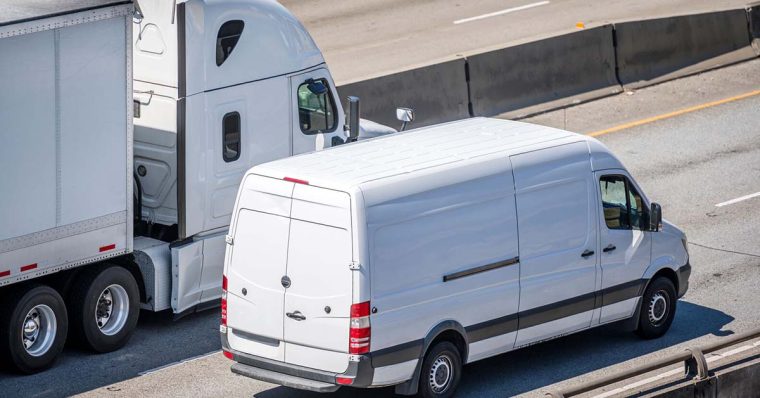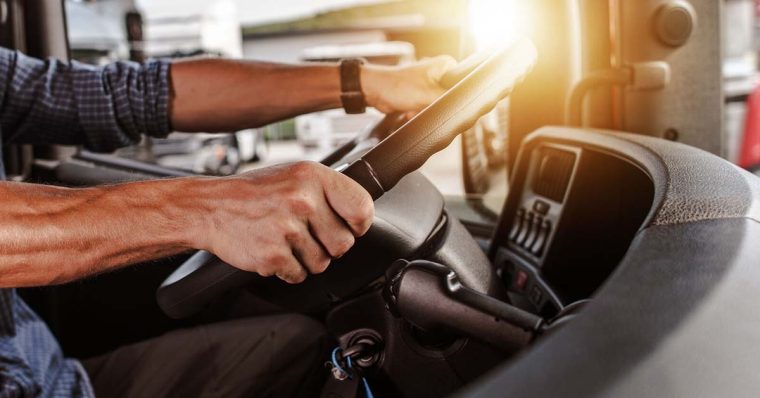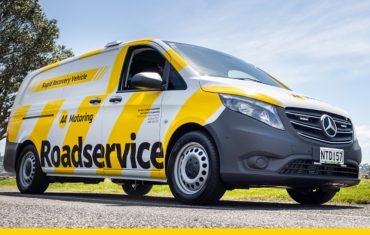
More to fleets than meets the eye
Fleet ManagementWhen it comes to looking after your business vehicles, there may be some crucial assets you are not including in your planning, and you should. The fundamentals of good fleet management apply just as much – maybe more – to non-core commercial fleet assets, as they carry unique risks and potentially greater safety impacts.
We sat down with Craig Porter, General Manager, Commercial and Technical Client Relationships at SG Fleet, to discuss why it’s important to apply strong fleet management fundamentals to all the mobility assets that do the work for your business – not just the traditional cars, vans, and trucks.
What else goes into a fleet?
Wheeled or ‘yellow fleets’ — think forklifts and reach stackers, for example — are part of the vehicle mix alongside trucks, vans, and passenger cars – especially in industries such as logistics, facility management, and construction. There are also other essential assets and equipment that should be covered in fleet planning in businesses of all shapes and sizes.
“It’s a really long list,” admits Craig before name-checking items that might typically be categorised under ‘non-core commercial fleet’ (although not limited to):
- Materials handling equipment
- Construction equipment, including generators
- Earthmoving equipment
- Trailers for transporting equipment
- Agricultural machinery
And more recent additions to the list:
- Electric carts and bikes
- All-terrain vehicles (for accessing defence sites, building sites, beaches, parks, etc.)

As Craig explains, “A lot of the essential business mobility assets these days are tracked instead of wheeled, particularly in the construction or agriculture spaces, and we are managing them alongside more traditional wheeled assets.”
With all of these tracked or wheeled non-core commercial fleet assets, and plant and machinery items, organisations will find enormous value when applying fleet management fundamentals to their managed services.
“An example is a crane, or it could be a refrigeration unit or a tail-lift or tailgate. They’re attached assets, but we treat them as separate because they have their own set of compliance and legislation requirements besides the primary assets.”
“Many companies may have various assets, but they don’t support them all as part of a fleet program for procurement, servicing and maintenance and inspections and so forth. They’re often overlooked because they’re an accompaniment to a major asset. We treat them like separate items.”
“Materials handling is definitely one area that customers often forget about but have a lot of it around their business,” he continues. “Often when we come forward and we propose solutions and opportunities around materials handling, it’s warmly embraced.”

Non-core commercial fleets and compliance
A fleet management provider can play a vital role in helping organisations stay abreast of important safety and operational compliance obligations with their non-core commercial fleet assets. Some of these compliance considerations may not be immediately apparent, even to professionals who are experienced in fleet management. Take trailers as an example.
As Craig details, “There are so many different types of trailers for moving things, from transporting small excavators around on the back of light commercial vehicles, right through to large float transport trailers, to your everyday garden rubbish trailers, and then, of course, all the big freight trailers that people are familiar with.”
“There’s a lot of variety in just about everything that needs a trailer to get around. Trailers are often purpose-built, which means things are not traditional. You need that extra layer of compliance to make sure the trailers you’re building are built-for-purpose, otherwise, they’re easily not weighted properly or constructed well enough to do the job that they were intended for.”
“Excavators are a great example,” he continues. “So, a trailer gets built, and the trailer builder builds the trailer based on knowing what the excavator is. But what’s never discussed is what other attachments and accessories have been added to that. If it’s a plumbing vehicle, there could be lots of pipe and pipe-cutters, and other tools.”
“If it’s using buckets and boring, then there are some really heavyweight things that are added into the mix. And where you put those things on the trailer can upset the balance of the car – upset the engineering strength of the trailer – and you have all sorts of safety issues down the track. Knowing all of that before you go in and make your purchase or set your specifications is critical knowledge that often people don’t consider.”
In further emphasising the complexity of commercial fleets, Craig details the compliance obligations of a crane. He lays out how a crane requires an inspection every year by an accredited inspector, then, every 10 years, it needs to be stripped down, looked over, repaired if needed, and put back together.
Not only are the re-certification standards extremely high but, unlike motor vehicles, there is no ‘grace period’ when it comes to this type of plant and equipment.
“You should not use a crane if it’s missed a service,” Craig emphasises. “You don’t have a day’s grace on that. The compliance penalties for not servicing your crane in the event you have a workplace accident are huge.”

Vehicle fleets and non-core commercial fleets: same, same but different
It might look like ‘traditional’ fleets and non-core commercial fleets are chalk and cheese, but Craig is quick to highlight the many similarities that both types of fleets share.
“A lot of the tools and products that a fleet management organisation has in place are equally tangible to commercial assets as they are to cars, just in a slightly different way,” he explains.
Maintenance is one of the best examples of this similarity. In both circumstances, maintenance schedules need to be adhered to, and records kept. Although non-core commercial fleets may not require registration, they still have compliance requirements – just with some variations in the maintenance criteria.
“Some of these assets can’t go to a dealership, for example,” says Craig. “They need someone to service them on-site. So, there’s a lot of similarities with slight differences.”
Procurement — and the importance of partnering with a fleet management provider to get it ‘right’ — is also something these fleet types have in common. Like vehicle fleets, Craig has seen many clients take what’s available, rather than what best suits their operational needs. Similarly, he’s seen businesses spend a lot of money on equipment because someone suggested that’s what they needed for the job.
Being patient and having an effective partnership with your fleet provider to help with your due diligence is just as important with commercial fleets as it is with vehicle fleets.
“You really need to work closely with either your fleet provider and the suppliers to come in and do site inspections on this sort of stuff – to see and understand what you’re going to use the asset for, particularly in material handling spaces,” explains Craig noting examples of people-buying goods that aren’t suited to the task at hand.
“There’s a lot to be said about having those conversations upfront as part of the procurement process when you’re looking at the different types of assets and features available. We [the fleet management provider] don’t always know what environment they’re going to operate in, but we definitely know to ask those questions, and we know where to get those answers from those suppliers.”
According to Craig, another important similarity between these fleet portfolios is the challenge of re-marketing at the end of the agreement. Where the resale value can be a major part of the decision-making process for each asset, finding buyers for machinery and equipment requires specialist knowledge; something that a good fleet management organisation should provide.
“Offloading some of this non-traditional equipment is very difficult,” Craig observes. “You’ve got to find the right market. Either through our industry relationships, the auction houses and different mediums that we use, a fleet management provider is well-placed to sell your gear at a fair price.”
He goes on to earmark the other benefits of leasing – maintenance records, procurement protocols and the use of the goods during the lease terms – which also helps with the resale value, making life less challenging when it comes to selling the machinery.
Speaking with Craig serves as a cautionary reminder: good fleet management covers more than just cars, vans, and trucks.
Want to find out how a professional commercial fleet management program will benefit your business? Talk to SG Fleet today.
 Driving Insights
Driving Insights




